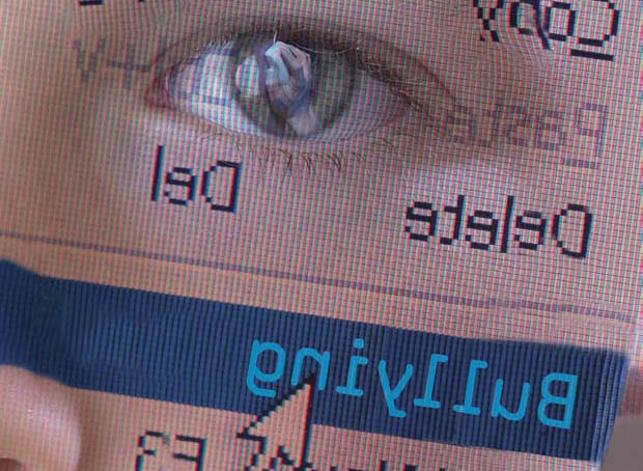
Cyberbullying (Professional Relations)
Despite the growing awareness about its negative effects, cyberbullying continues to be all too common among elementary and secondary school students. Online forums are still rife with the potential for false allegations and degrading comments, and new school-based video clips recorded with cellphones are posted to YouTube every day.
Our members and students themselves are increasingly reporting incidents of negative comments and images on social networking sites such as Facebook.
For instance, the Student Safety Line, set up in January 2008 following the Toronto District School Board’s Final Report on School Safety, has reported receiving an average 30 calls a week. Forty percent of the callers were elementary students.1 Bullying was cited as the second most frequent reason for calling at 12 percent, with harassment cited at 10 percent and physical/verbal confrontation at 15 per cent.2
As a result of this persisting phenomenon, delegates to the Canadian Teachers’ Federation (CTF) annual meeting voted unanimously to lobby the federal government to make cyberbullying a criminal offence.3
The delegates, who represent 220,000 teachers across Canada, also approved a far-reaching policy that recommends the adoption of provisions in collective agreements and workers’ compensation legislation to protect teachers.
New statistics
The CTF based its actions on the results of its National Issues in Education poll. The survey contacted 2,523 Canadians in February and March and found that:
- 34 percent of respondents knew of students in their community who had been targeted by cyberbullying in the past year.
- 86 percent believed that cyberbullying by students can be prevent- ed effectively if teachers are trained to respond to such incidents.
- 96 percent believed that school boards should develop and enforce policies that hold their students accountable when they are identified as cyberbullies.
- About 70 percent believed school boards should hold students accountable when the cyberbullying originates outside the school; for example, from the student’s home.
- 90 percent said that an effective measure to prevent cyberbullying by students is for parents to become more knowledgeable about their children’s activities on the Internet and with electronic communication devices and more responsible for monitoring them.
- one in 10 knew someone close to them who had been cyberbullied.
- one in five was aware of teachers who had been cyberbullied.
Legal landscape
What tools are currently in place to protect teachers from cyberbullying? Changes to the Education Act enacted February 1, 2008 mean that “bullying” can now result in suspension.4 The Ministry of Education’s Policy and Program Memorandum No. 144, defines bullying as “typically a form of repeated, persistent, and aggressive behaviour directed at an individual or individuals that is intended to cause (or should be known to cause) fear and distress and/or harm to another person’s body, feelings, self-esteem, or reputation. Bullying occurs in a context where there is a real or perceived power imbalance.”5
All Ontario school boards were directed to include this definition in their policies. Of course, a single act can also be very damaging to a teacher’s career and ought to be captured by any definition of cyberbullying. Consider, for example, a student who digitally assembles and then circulates a doctored and humiliating photograph depicting a teacher. The image, once circulated, can never be erased from cyberspace.
The Ministry of Education has also made efforts to recognize cyberbullying in its policy memorandum, which acknowledges that bullying “may also occur through the use of technology” such as email, cellphones, text messaging, Internet websites, or other technology. Unfortunately though, it is up to individual school boards to specifically incorporate cyberbullying in their anti-harassment policies.
Cyberconduct according to CTF
The CTF has recently endorsed another definition and position regarding online behaviour. It has defined cyberbullying as “the use of information and communication technologies to bully, embarrass, threaten or harass another. It also includes the use of these technologies to engage in conduct or behaviour that is derogatory, defamatory, degrading, illegal or abusive.”6
The new CTF policy also sets out appropriate online behaviour. This includes:
- maintaining professional standards when communicating with teachers, students, parents, and administrators
- maintaining the confidentiality of information about students, parents, teachers, or administrators
- respecting the rights of all members of the online community and acting in a manner that facilitates the orderly functioning of that community
- ensuring that appropriate safeguards and protection measures are in place prior to posting personal or professional data.7
The guiding principles emphasize the balance between the right to self-expression and the right to be free from harmful conduct: “Individual rights to freedom of information, thought, belief, opinion and expression, should be balanced with the rights and responsibilities of parents, guardians and the education community. These include the right to guide individuals in the responsible use of information and communication technology.”8
Tips for members
If you believe that you, yourself, or a colleague has been targeted by any type of cyberbullying, consider the following actions:
- Keep the email addresses and the copies of relevant emails with full headers (date and time received).
- Keep a printout of any website posting.
- If you believe that you can accurately identify the student committing the act of cyberbullying, be vigilant and ensure that your belief is substantiated by documentation and raised with the principal at your school.
- Document the behaviour(s) in detail with dates, times, and potential witnesses.
- Ask for input into any educational materials or notices to students and parents regarding cyberconduct or cyberbullying and expect release time for this work.
- Discuss with your principal an appropriate disciplinary response for the student. Insist on an educational response for the student as well, and perhaps for the broader school community.
- Depending on the severity of the conduct, you may wish to contact the police.
- Consider how you are using technology, chat sites, or email communications with students and colleagues and ensure that your use meets professional standards in every respect.
- For additional advice contact staff in Professional Relations Services at 416-962-3836 or 1-888-838-3836. see also related articles:
- “Think Before You Click” – October 2007, Volume 10, No. 1
- “Understanding Changes to Safe Schools Legislation” - February 2008, Volume 10, No. 3.
1 Toronto District school Board, “On the Road to health: leadership Action team Report” (May 20, 2008), pp. 3-4,. Available online at tdsb.on.ca/about_us/media_ room/room.asshow=allNews&view=detailed&self=12230.
2 ibid.
3 Canadian teachers’ Federation, Media Release, “Cyberbullying in schools: national poll shows Canadians’ growing awareness” (July 11, 2008). Available online at ctf-fce.ca/e/news/index.asp
4 Education Act, s.306(1).
5 Ontario Ministry of Education, Policy/Program Memorandum no. 144, Bullying Prevention and intervention (October 4, 2007). Available online at edu.gov.on.ca/ extra/eng/ppm/144.pdf.
6 Canadian teachers’ Federation, Cyberconduct and Cyberbullying Policy, 5.10.6.1(b). Available online at ctf - fce.ca/e/index.asp.
7 ibid. at 5.10.6.1(a).
8 ibid. at 5.10.6.2.3.
